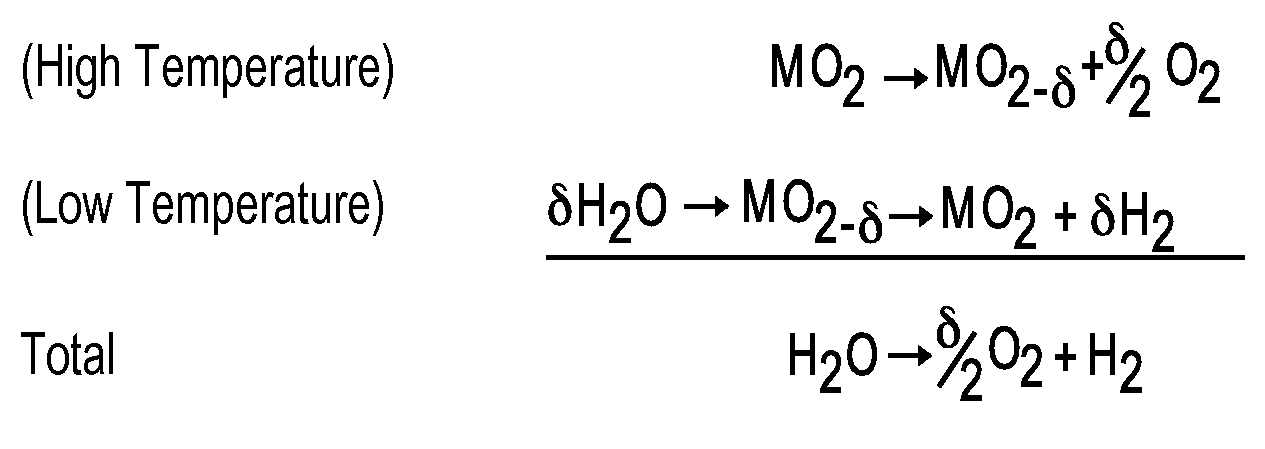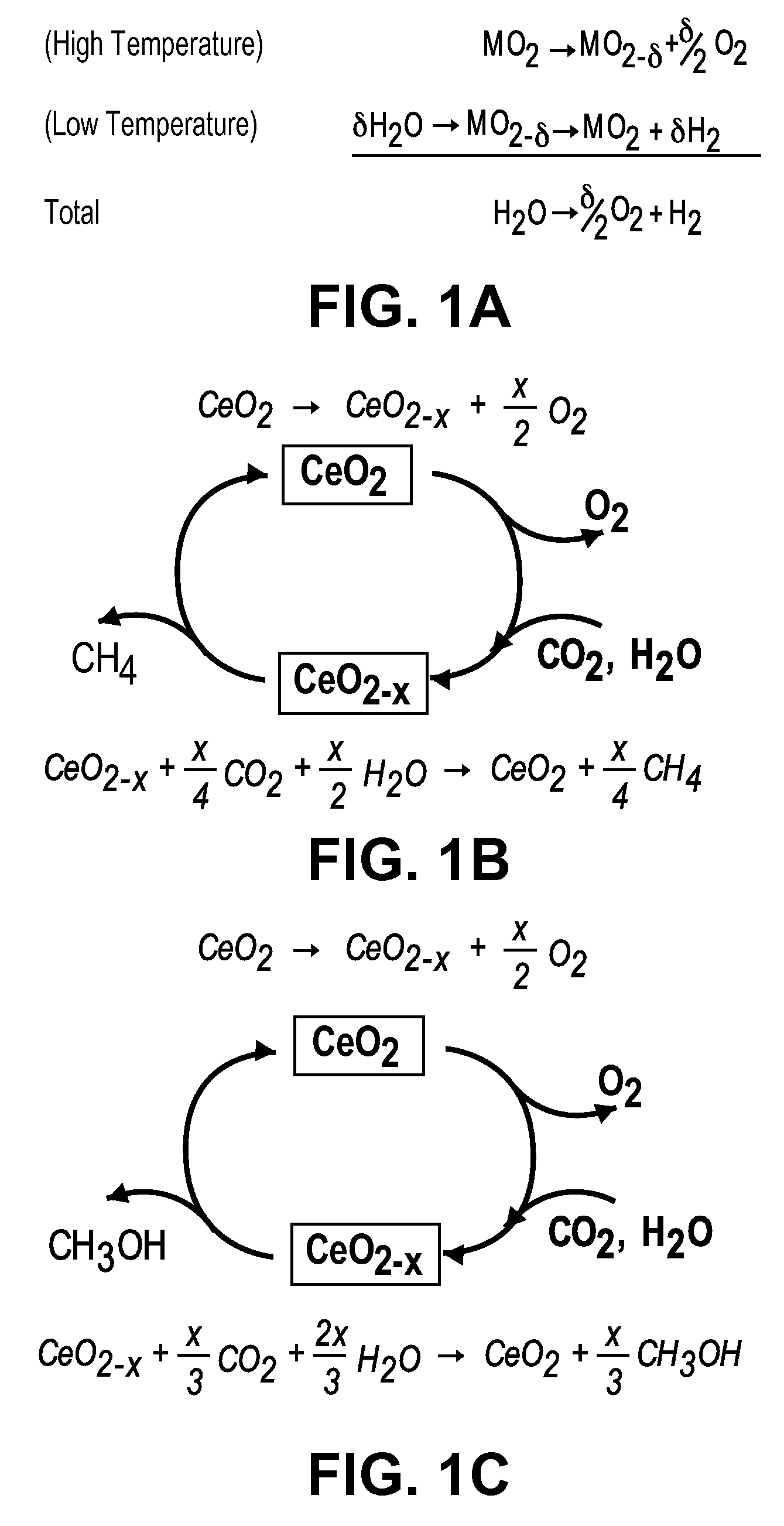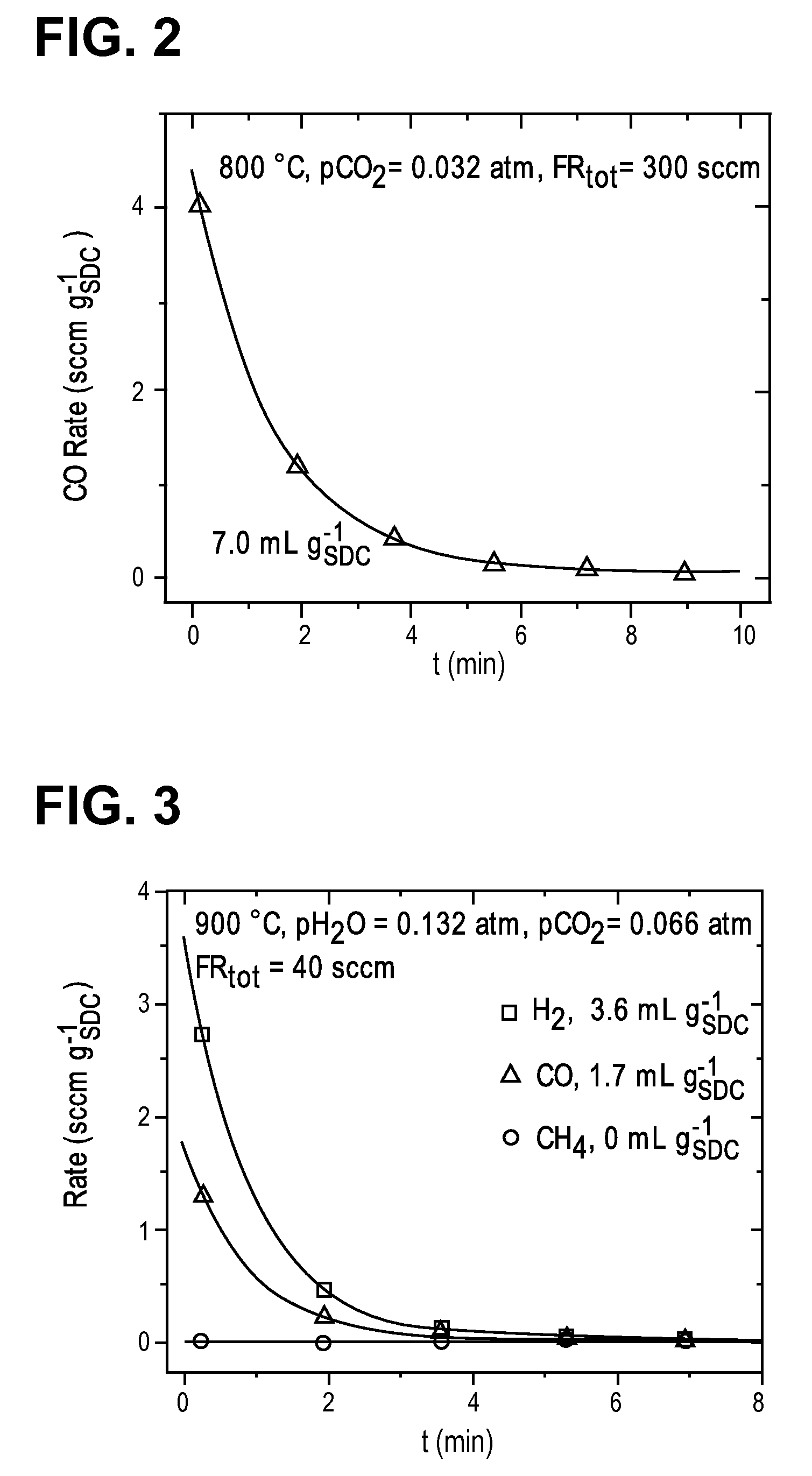Thermochemical synthesis of fuels for storing thermal energy
a technology of thermal energy and fuel, which is applied in the direction of gaseous fuel, catalyst activation/preparation, energy input, etc., can solve the problems of structural transition (or phase change) of these materials, fundamental challenges remain, and inability to achieve large-scale energy storage technologies
- Summary
- Abstract
- Description
- Claims
- Application Information
AI Technical Summary
Benefits of technology
Problems solved by technology
Method used
Image
Examples
example 1
Preparation of Reactive Oxide Substrate
[0069]Sm0.15Ce0.85O1.925 (NexTech SDC15, surface area=32 m2 g−1) was ball milled with 30 wt % starch in ethanol, uniaxially pressed into a pellet, and sintered at 1500° C. for 24 h. The pellet was then lightly crushed and sieved to obtain particle size between 150 and 500 μm. 10 wt % Ni-SDC was prepared via wetness impregnation by dissolving the appropriate amount of Ni(NO3)2.6H2O. After calcining at 750° C., the powder was sintered at 1350° C. for 24 h, pressed into a pellet, lightly crushed, and sieved as described above. SDC without the addition of metal catalyst was also prepared identically as the 10 wt % Ni-SDC.
[0070]The above method was followed for the preparation of 2 wt % Pt—Sm0.15Ce0.85O1.925 using (NH3)4Pt(NO3)2 and 2 wt % Rh—Sm0.15Ce0.8SO1.925 using Rh(NO3)3.2H2O.
example 2
Preparation of CO and Syngas Fuels
[0071]Samples containing 1000 mg of SDC were loaded into a 10 mm diameter continuous flow packed bed reactor with the particles held in place by a porous quartz frit. Reaction gases were delivered by digital mass flow controllers, and the effluent gas was measured by a Varian CP-4900 gas chromatograph equipped with PoraPak Q and Molecular Sieve 5A columns. H2, CH4, CO and CO2 concentrations were converted to flow rates using an internal N2 standard, which also served as a diluent. In some cases, Ar was also used as a diluent. GC calibration curves were established using analytical grade premixed gases.
[0072]The reduction of ceria was achieved by flowing a mixture of H2, H2O, and Ar at either Po2=2.0×10−21 atm at 800° C. or 3.8×10−18 atm at 900° C. Humidification was achieved by bubbling the reaction gas through a H2O bubbler inside a temperature controlled bath. The oxidation of ceria was achieved by passing diluted water vapor, carbon dioxide, sepa...
example 3
Preparation of Methane
[0073]The method of Example 2 was followed using 10 wt % Ni—Sm0.15Ce0.85O1.925 at 400° C. for the oxidation step.
PUM
| Property | Measurement | Unit |
|---|---|---|
| Fraction | aaaaa | aaaaa |
| Fraction | aaaaa | aaaaa |
| Fraction | aaaaa | aaaaa |
Abstract
Description
Claims
Application Information
 Login to View More
Login to View More - R&D
- Intellectual Property
- Life Sciences
- Materials
- Tech Scout
- Unparalleled Data Quality
- Higher Quality Content
- 60% Fewer Hallucinations
Browse by: Latest US Patents, China's latest patents, Technical Efficacy Thesaurus, Application Domain, Technology Topic, Popular Technical Reports.
© 2025 PatSnap. All rights reserved.Legal|Privacy policy|Modern Slavery Act Transparency Statement|Sitemap|About US| Contact US: help@patsnap.com



